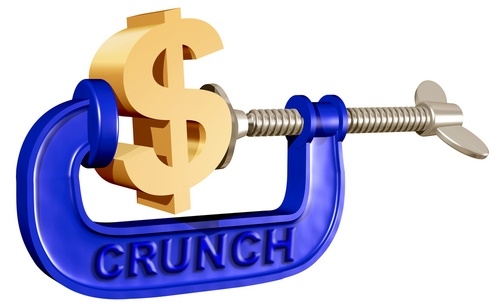
By Roger J Kerr

Direction and sentiment for the Kiwi dollar in the global forex markets is again being dominated by the Australian dollar’s movements.
The Aussie dollar is firmly under the pump in the currency markets as the hard commodity prices its economy relies on suffer from weaker Chinese economic data.
Also weaker than expected Australian retail sales and GDP growth numbers last week pushed the negative sentiment along and the AUD fell below the key 0.7000 support level to the USD.
Whilst the Kiwi dollar has not been sold against the USD as aggressively as the trans-Tasman cousin (NZD/AUD cross-rate up to 0.9100) it has now certainly broken below the previous support area at 0.6400/0.6500.
Prior to last week it appeared that Australian economic data (e.g. employment growth) was on the improve as their economy transitions from being over-reliant on the resources sector.
There are some brighter spots in the Australian economic performance with tourism currently booming (as it is in NZ) and a record number of new sharemarket IPO listings over the first half of this year, which tells you there is no shortage of risk capital in Australia.
Whilst the AUD/USD exchange rate at 0.6900 is now considerably below the 0.7500 “fair equilibrium value” the Reserve Bank of Australia spoke of several months ago, a turnaround is unlikely to occur until metal and mining commodity prices show some improvement off their lows.
The future direction of both the NZD and the AUD over coming weeks from their current low levels will be highly dependent on two key decisions being taken internationally:-
- Whether the US Federal Reserve increase their official interest rates by 0.25% at their meeting on 18 September (NZT), the first US rate hike in 10 years? Latest US economic data points to the Fed remaining firmly on their pre-set plan of returning monetary policy to normal settings. A week ago the volatility and uncertainty in Chinese and US sharemarkets may have swayed the Fed to delay the first increase to October or November. However, the excessively jittery and illiquid markets have quickly settled and the US economic data has not been so unexpectedly weak to cause the Fed to delay. A 0.25% increase on 17 September is already priced into the USD exchange rate value so further gains by the USD are not expected. A decision by the Fed to delay would be USD negative and allow some recovery upwards in the NZD and AUD.
- How the Chinese authorities react to further weakness in Chinese economic data? It seems that hard commodity prices will only start to recover out of their price slump when Chinese economic data shows signs of improvement. As stated previously in this column, my view is that the Chinese Government and the PBOC will do whatever it takes to ensure the slowdown in Chinese economic activity this year is a soft landing, rather than a more disruptive hard landing where economic growth shudders to a sudden halt. Additional fiscal and monetary stimulus packages seems likely in China over coming weeks as they work hard to ensure the 7% growth target is achieved in 2015.
At the end of the day the metal and mining commodity prices will reflect global demand levels that are determined by global economic growth. The economic growth is certainly happening in the US, it is no worse in Europe compared to the last six years since the GFC, however Chinese growth is slower. Firm fiscal and monetary action in China to stop their growth rates falling away holds the key to commodity price direction.
My central view is that Chinese authorities will deliver that economic stimulus action.
Thursday’s Monetary Policy Statement from the RBNZ is still expected to be less dovish than most anticipate. The RBNZ will continue to state that the fourth 0.25% cut to 2.50% will be data dependent.
The RBNZ will also note that the overall value of the NZ dollar as measured by the TWI Index at 68.60 is lower than their previous assumptions and thus monetary conditions are therefore looser through the exchange rate channel than their previous expectations.
Their forward tracks for CPI inflation and 90-day interest rates will be closely examined, as will their concerns about the Auckland residential property market.
Evidence continues to mount that the NZ economy (outside dairy) continues at a reasonably robust pace, despite plunging business confidence surveys which seem an temporary over-reaction to recent financial/investment market volatility and overly-pessimistic economic outlooks from some quarters.
To subscribe to our daily Currency Rate Sheet email, enter your email address here.
Daily exchange rates
Select chart tabs
Roger J Kerr is a partner at PwC. He specialises in fixed interest securities and is a commentator on economics and markets. More commentary and useful information on fixed interest investing can be found at rogeradvice.com

We welcome your comments below. If you are not already registered, please register to comment.
Remember we welcome robust, respectful and insightful debate. We don't welcome abusive or defamatory comments and will de-register those repeatedly making such comments. Our current comment policy is here.